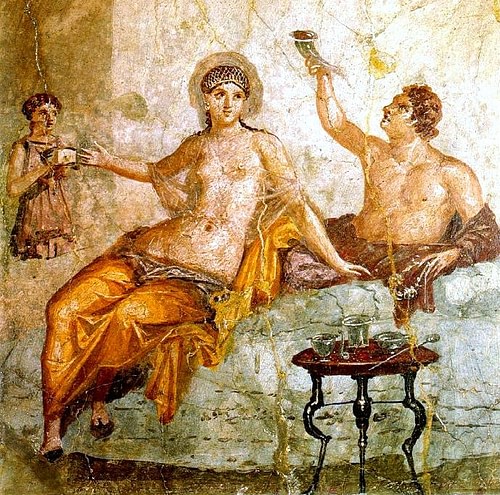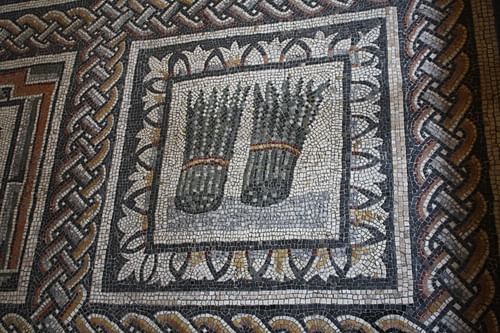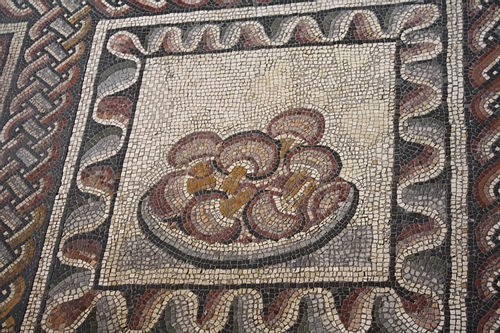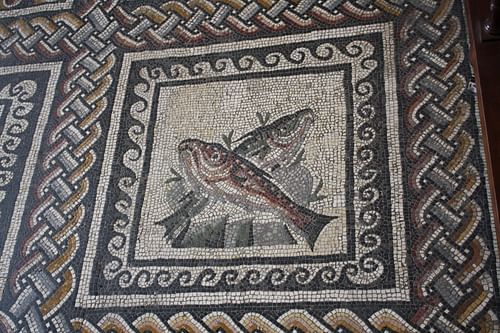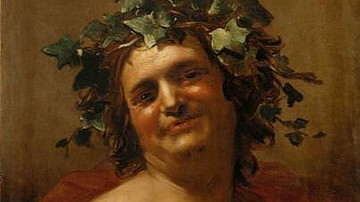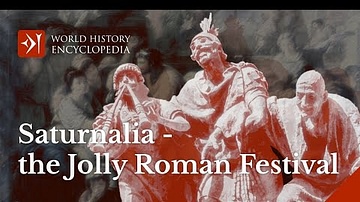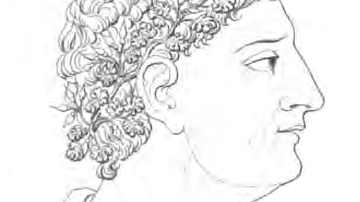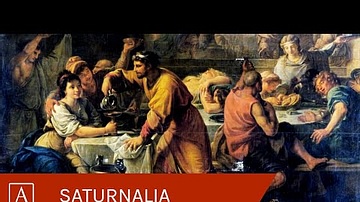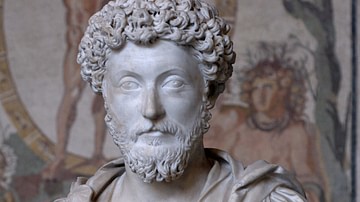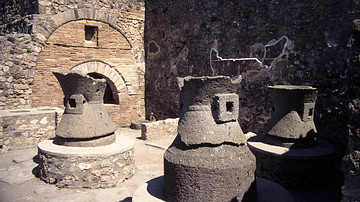
Marcus Gavius Apicius, a wealthy and educated member of the Roman elite who lived during the reign of Emperor Tiberius (14-37 CE), is famous for his love of food and a cookbook titled De Re Coquinaria (The Art of Cooking). He was a model gourmand who organized and held extravagant dinner parties, and scholars have suggested that he was provided money by the Roman government to feed and entertain foreign dignitaries. These elaborate affairs offered Apicius and the government the opportunity to showcase the finest Roman cuisine.
Described by Tertullian as “the patron saint of cooks,” (On the Soul, 33) Apicius is credited with writing two cookbooks: one of general recipes; the other a book on sauces. Neither book has survived. He established a cooking school and served as an inspiration to a whole host of later cooking schools. His life spent studying, acquiring and consuming food created one part of his legacy which is now associated with anyone who loves high quality and expensive food. However, his food extravagances eventually drained his household revenues, thus jeopardizing his ability to maintain his luxurious culinary lifestyle and causing Apicius to become distraught and commit suicide.
The Times
In ancient Roman society, the food consumed by the elites was prepared by cooks who were slaves. While not a cook himself, Apicius earned his reputation as a gourmand not only for his sumptuous feasts but also for his knowledge of food. His skills focused on the areas of animal husbandry, crops and produce production. He knew about the best, most extravagant foodstuffs but also the location of the desired ingredients, and the expanse of the Roman Empire provided Apicius with a wide range of foods and tastes.
Dinner (cena) was a more formal affair consisting of three courses with no limit on the number of dishes offered for each course. The first course (gustatio) consisted of appetizers, especially those which included eggs. The main course (mensae primae) included dishes of meats, fish and stews. The dessert course (mensae secundae) offered fruits, nuts and cakes. It was these cena recipes which were collected and published in Apicius's De Re Coquinaria.
The Romans' willingness to adopt and integrate foreign food customs created the first truly international cuisine. However, the growing luxury of Roman recipes and meals served as an early indicator of the moral decay of the empire challenging the “…widely held belief that Rome's greatness was built upon an austere frugality,” according to Roy Strong (Feast, 19). Despite Rome's growing extravagance with regard to better quality foods, the typical Roman breakfast and lunch remained quite simple consisting chiefly of water, bread, cheese, fruits and leftovers. Dinner was a separate matter and it was at this meal that Apicius demonstrated his gourmet tastes.
The Book
Apicius is credited with writing the only surviving cookbook of the Greco-Roman world, although some scholars argue that there is little connection between Apicius and the cookbook. Consensus among researchers suggests that the recipes came from his household's cooks. De Re Coquinaria contains nearly 500 recipes; how many of those recipes can be directly linked to Apicius remains open to debate. The whole book consists of ten individual books arranged according to the type of food to be prepared. The earliest surviving editions of the cookbook date back to the 9th century CE and are held by the Vatican and the New York Academy of Medicine in New York City.
The recipes in De Re Coquinaria are not written with the home cook in mind but instead composed for trained, experienced chefs. Recipes account for 90% of the entire work although unlike modern recipes, these ancient instructions provide no amounts and few instructions on how to actually prepare the dishes.
The lack of instructions in the recipes is highlighted by the following recipe for roasted wild boar:
Boar is cooked like this: sponge it clean and sprinkle with salt and roast cumin. Leave to stand. The following day, roast it in the oven. When it is done, scatter with ground pepper and pour on the juice of the boar, honey, liquamen, caroenum, and passum. (330).
The remaining 10% of the cookbook highlights presentation techniques as well as - ironically - remedies for stomach aches.
While not all of the recipes result in an exotic dish many do. The recipes demonstrate the inclusion of local ingredients but primarily ingredients from faraway places many of which were quite expensive and lavish: birds (e.g. ostrich, peacock, crane), animals (e.g. boar, goat, hare), various internal organs (e.g. brains, lungs, stomach), lots of vegetables, fruits and nuts dominate the ingredient lists. For example, the following is a recipe for flamingo in spiced date sauce:
Scald the flamingo, wash and dress it, put it in a pot, add water, salt, dill, and a little vinegar to be parboiled. Finish cooking with a bunch of leeks and coriander, and add some reduced must [grape juice] to give it color. In the mortar crush pepper, cumin, coriander, laser root, mint, rue, moisten with vinegar, add dates, and the fond [drippings] of the braised bird, thicken, strain, cover the bird with the sauce and serve. (6.231).
Multiple seasonings, sometimes as many as ten per dish, mixed with a variety of main ingredients often result in a finished product similar to the modern casserole. Nearly all of the recipes include some type of sauce chiefly to mask the flavors of the ingredients. Garum, a fish-based sauce that was extremely salty and pungent, was used in all of Apicius' recipes. Regardless of the final outcome the recipes reflect a Mediterranean palate from areas such as Italy, Greece, Turkey, the Iberian Peninsula and North Africa. Look here and here for more Roman recipes, including some of Apicius's.
The work as a whole reflects the Roman empire at its height: the extravagance and luxury of a society and culture enjoying, quite literally, the fruits of conquest. Especially amongst wealthy Romans, food and cooking allowed them to put on display how really rich they were as well as the status of friends and acquaintances whose company they enjoyed when they held luxurious banquets and meals. Conspicuous consumption, here showcased by Apicius, characterized upper-class Roman society, and its expensive meats, the use of slave cooks and the varieties of foreign ingredients demonstrated the class differences of ancient Rome.

